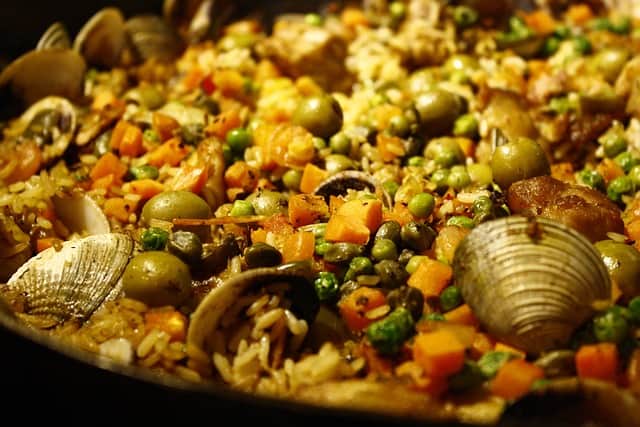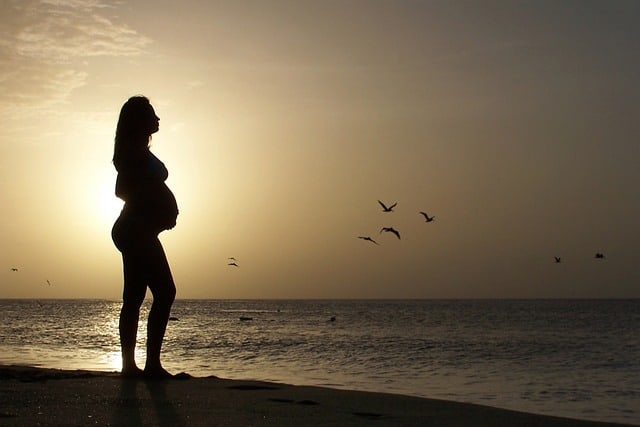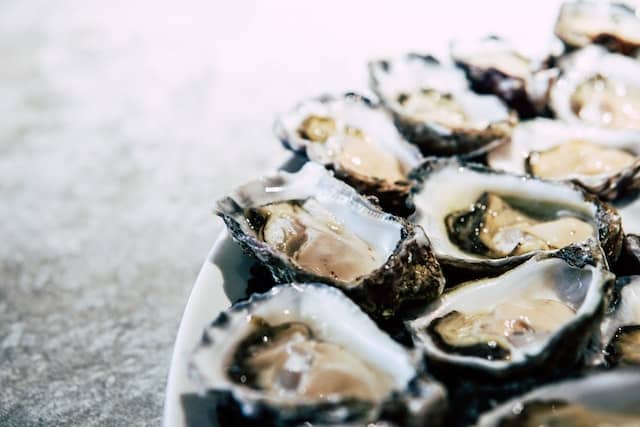Seafood is a delicious and healthy source of protein that is rich in omega-3 fatty acids, vitamins, and minerals. However, many pregnant women are hesitant to consume seafood due to concerns about potential health risks.
Clams, in particular, are a popular seafood choice that many expectant mothers may be wondering about. Is it safe to eat clams while pregnant?
Clams are a type of shellfish that are low in fat and high in protein. They are also a good source of iron, zinc, and vitamin B12. However, they can also contain harmful bacteria and toxins that can be dangerous for pregnant women.
It is important to know the risks and benefits of consuming clams during pregnancy before making a decision.
Key Takeaways
- Clams are a nutritious source of protein, iron, zinc, and vitamin B12.
- Pregnant women should be aware of the potential risks associated with consuming clams, including exposure to harmful bacteria and toxins.
- It is important for expectant mothers to follow FDA and EPA guidelines on safe seafood consumption during pregnancy.
Understanding Clams and Their Nutritional Benefits
Clams are a type of shellfish that are popular in many seafood dishes. They are a rich source of protein, iron, selenium, vitamin B12, iodine, and omega-3 fatty acids.
Protein is an essential nutrient that is required for the growth and repair of tissues in the body. Clams are a good source of high-quality protein, which makes them an excellent food choice for pregnant women.
Iron is another important nutrient that is required for the formation of red blood cells. Pregnant women require more iron than usual to support the growth and development of their babies.
Clams are a rich source of iron, which makes them a good food choice for pregnant women.
Selenium is an important mineral that is required for the proper functioning of the immune system. It also plays a role in the production of thyroid hormones. Clams are a good source of selenium, which makes them a nutritious food choice for pregnant women.
Vitamin B12 is an essential vitamin that is required for the proper functioning of the nervous system and the formation of red blood cells. Clams are a rich source of vitamin B12, which makes them an excellent food choice for pregnant women.
Iodine is an important mineral that is required for the production of thyroid hormones. Pregnant women require more iodine than usual to support the growth and development of their babies.
Clams are a good source of iodine, which makes them a nutritious food choice for pregnant women.
Omega-3 fatty acids are essential fatty acids that are required for the proper functioning of the brain and the development of the nervous system. Clams are a good source of omega-3 fatty acids, which makes them a nutritious food choice for pregnant women.
Overall, clams are a nutritious food choice for pregnant women due to their high protein, iron, selenium, vitamin B12, iodine, and omega-3 fatty acid content.
Pregnancy and Seafood Consumption
Seafood is a great source of protein and omega-3 fatty acids, which are important for fetal development during pregnancy. However, certain types of seafood can contain high levels of mercury, which can be harmful to the developing fetus.
The FDA recommends that pregnant women consume 8-12 ounces of low-mercury seafood per week, such as shrimp, salmon, and canned light tuna. They should avoid high-mercury seafood, such as shark, swordfish, king mackerel, and tilefish.
Clams fall into the category of low-mercury seafood and can be safely consumed during pregnancy. They are a good source of protein, iron, and other essential nutrients that are important for fetal development.
It is important to ensure that clams are cooked thoroughly before consumption to avoid the risk of foodborne illness. Pregnant women should also avoid raw or undercooked seafood, including clams, to reduce the risk of infection.
In summary, clams can be safely consumed during pregnancy as part of a healthy and balanced diet. Pregnant women should aim to consume 8-12 ounces of low-mercury seafood per week and avoid high-mercury seafood to ensure the health and safety of their developing fetus.
Mercury Content in Seafood
Mercury is a naturally occurring element found in the environment. It can be released into the air and water through natural processes, as well as human activities such as burning coal and mining.
Mercury can accumulate in fish and shellfish, and high levels of mercury in the body can be harmful, especially for developing fetuses and young children.
Certain types of fish are known to contain higher levels of mercury than others. These include swordfish, shark, king mackerel, bigeye tuna, tilefish, marlin, and orange roughy. Pregnant women are advised to avoid these fish altogether.
On the other hand, some types of seafood are low in mercury and can be safely consumed during pregnancy. Clams, for example, are a good source of protein and other nutrients, and are considered low in mercury. Other low-mercury seafood options include shrimp, salmon, catfish, and tilapia.
It’s important for pregnant women to be aware of the mercury content in seafood and make informed choices about what they eat. The FDA recommends that pregnant women consume 2-3 servings of low-mercury seafood per week, and avoid high-mercury fish altogether.
By following these guidelines, pregnant women can safely enjoy the health benefits of seafood while minimizing their exposure to mercury.
Safe Seafood Choices During Pregnancy
During pregnancy, it is important to be aware of which seafood is safe to eat and which should be avoided to ensure the health of both the mother and the developing baby.
While seafood is a great source of protein and omega-3 fatty acids, some types can contain high levels of mercury or other contaminants that can be harmful to a developing fetus.
The following table provides a list of safe seafood choices during pregnancy:
| Safe Seafood Choices |
|---|
| Salmon |
| Shrimp |
| Cod |
| Sardines |
| Trout |
| Pollock |
| Tilapia |
| Anchovies |
| Catfish |
| Herring |
| Sardine |
| Lobster |
| Scallop |
| Scallops |
| Squid |
| Crawfish |
| Black Sea Bass |
| Crab |
| Flounder |
| Haddock |
| Hake |
| Perch |
| Low-mercury fish |
It is important to note that pregnant women should avoid certain types of seafood due to their high levels of mercury. These include shark, swordfish, king mackerel, and tilefish. Additionally, raw or undercooked seafood should be avoided, as it can contain harmful bacteria and viruses.
When cooking seafood, it is important to ensure that it is cooked thoroughly to kill any harmful bacteria or viruses. Pregnant women should also avoid eating any seafood that has a strong odor or taste, as this can be a sign of spoilage.
Overall, pregnant women can safely consume a variety of seafood as long as they are aware of which types are safe and how to properly prepare them. It is important to consult with a healthcare provider to ensure that dietary choices are appropriate for individual needs and circumstances.
FDA and EPA Guidelines on Seafood Consumption During Pregnancy
The Food and Drug Administration (FDA) and the Environmental Protection Agency (EPA) have issued guidelines on seafood consumption during pregnancy.
These guidelines are designed to help pregnant women make informed decisions about the types and amounts of seafood they should eat while pregnant.
The FDA and EPA recommend that pregnant women consume 8 to 12 ounces (2 to 3 servings) of seafood per week. This is equivalent to about two meals per week. However, pregnant women should avoid certain types of seafood that are high in mercury, such as shark, swordfish, king mackerel, and tilefish.
The FDA and EPA also recommend that pregnant women choose seafood that is low in mercury, such as shrimp, canned light tuna, salmon, pollock, and catfish.
These types of seafood are safe to eat during pregnancy and can provide important nutrients such as omega-3 fatty acids, which are important for fetal brain and eye development.
In addition to the FDA and EPA guidelines, pregnant women should also follow the Dietary Guidelines for Americans, which recommend a healthy and balanced diet that includes a variety of fruits, vegetables, whole grains, lean proteins, and low-fat dairy products.
Pregnant women should also be aware of local fish advisories, which provide information about the safety of fish caught in local waters. If a local fish advisory recommends avoiding certain types of fish, pregnant women should follow that advice.
Overall, pregnant women can safely consume seafood as long as they follow the FDA and EPA guidelines and choose seafood that is low in mercury. By doing so, they can provide important nutrients to their developing fetus while minimizing the risk of mercury exposure.
Risks Associated with Raw Seafood
Raw seafood, including clams, can pose a risk of foodborne illness, especially for pregnant women. Raw seafood can contain harmful bacteria, viruses, and parasites that can cause infections.
Some of the common types of raw seafood include sushi, lox, sashimi, ceviche, kippered, nova style, and smoked seafood.
When it comes to harmful bacteria, the most common one associated with raw seafood is Vibrio. Vibrio bacteria are naturally found in warm coastal waters and can contaminate shellfish such as clams. Vibrio infections can cause symptoms such as diarrhea, vomiting, fever, and chills. In severe cases, Vibrio infections can lead to sepsis, which can be life-threatening.
Another harmful bacteria associated with raw seafood is Listeria. Listeria can be found in smoked seafood and can cause symptoms such as fever, muscle aches, and gastrointestinal problems. In pregnant women, Listeria infections can lead to miscarriage, stillbirth, or premature delivery.
To reduce the risk of foodborne illness, pregnant women should avoid eating raw seafood, including clams. It is recommended that pregnant women only consume seafood that has been cooked to an internal temperature of 145°F.
If you are unsure if the seafood has been cooked to the proper temperature, it is best to avoid it.
In conclusion, pregnant women should be cautious when consuming seafood, especially raw seafood. Raw seafood can contain harmful bacteria, viruses, and parasites that can cause infections.
To reduce the risk of foodborne illness, it is recommended that pregnant women avoid eating raw seafood and only consume seafood that has been cooked to the proper temperature.
Cooking Seafood Properly
When it comes to seafood, cooking it properly is essential for pregnant women. Cooking seafood thoroughly can help to reduce the risk of foodborne illnesses caused by bacteria, viruses, and parasites that can be harmful to both the mother and the baby.
Here are some tips for cooking seafood properly:
- Always wash your hands and clean all utensils and surfaces before and after handling raw seafood.
- Cook seafood to an internal temperature of 145°F (63°C) to kill harmful bacteria and viruses. Use a food thermometer to ensure that the seafood is fully cooked.
- Avoid eating raw or undercooked seafood, including oysters, clams, and sushi. These foods can contain harmful bacteria and viruses that can cause foodborne illnesses.
- When cooking seafood, make sure that it is cooked all the way through. The flesh should be opaque and firm to the touch.
- If you are using a marinade, discard the marinade after use. Do not reuse it as it may contain harmful bacteria.
- Store seafood at a temperature of 40°F (4°C) or below until you are ready to cook it.
By following these tips, pregnant women can enjoy seafood while minimizing the risk of foodborne illnesses.
Additional Nutrients from Seafood
In addition to being a good source of protein, seafood is also a rich source of several important nutrients that are essential for a healthy pregnancy. Some of the key nutrients found in seafood include omega-3 fatty acids, DHA, calcium, magnesium, niacin, vitamin A, vitamin C, vitamin E, and vitamin D.
Omega-3 fatty acids are a type of polyunsaturated fat that are important for fetal brain and eye development. DHA, a specific type of omega-3 fatty acid, is particularly important for brain development and is found in high concentrations in fatty fish such as salmon, sardines, and mackerel.
Calcium and magnesium are minerals that are important for strong bones and teeth. Seafood such as shrimp, crab, and clams are good sources of these minerals.
Niacin, also known as vitamin B3, is important for healthy skin, nerves, and digestion. Tuna and salmon are good sources of niacin.
Vitamin A is important for healthy vision, skin, and immune function. Some types of seafood, such as salmon and shrimp, are good sources of vitamin A.
Vitamin C is an antioxidant that is important for immune function and collagen production. Shellfish such as clams and oysters are good sources of vitamin C.
Vitamin E is another antioxidant that is important for immune function and skin health. Seafood such as shrimp and crayfish are good sources of vitamin E.
Vitamin D is important for bone health and immune function. Fatty fish such as salmon and mackerel are good sources of vitamin D.
It’s important to note that some types of seafood may contain high levels of mercury, which can be harmful to developing fetuses. Pregnant women should avoid shark, swordfish, king mackerel, and tilefish, and limit their consumption of albacore tuna to no more than 6 ounces per week.
However, there are many types of seafood that are safe to eat in moderation during pregnancy and can provide important nutrients for both the mother and the developing fetus.
Seafood’s Impact on Pregnancy and Breastfeeding
Seafood is an excellent source of protein, omega-3 fatty acids, and other essential nutrients. However, pregnant and breastfeeding women should be cautious about the types and amounts of seafood they consume.
Some seafood contains high levels of mercury, which can be harmful to the developing nervous system of the fetus or infant.
The placenta acts as a barrier between the mother and the developing fetus, but it does not filter out all harmful substances. Mercury in seafood can cross the placenta and accumulate in the fetus’s brain and spinal cord, leading to developmental problems.
Fish consumption during pregnancy has been linked to improved brain development and higher IQ scores in children. However, excessive consumption of fish with high levels of mercury can have the opposite effect.
Omega-3 fatty acids found in seafood are essential for the development of the fetal brain and nervous system. They also play a crucial role in blood clotting, triglycerides, and heart health.
Studies have shown that consuming seafood during pregnancy can reduce the risk of preterm birth and improve mood and blood pressure.
However, pregnant and breastfeeding women should avoid certain types of seafood, such as shark, swordfish, king mackerel, and tilefish, which contain high levels of mercury.
In conclusion, seafood can be a healthy and nutritious part of a pregnant or breastfeeding woman’s diet. However, it is essential to choose low-mercury options and limit consumption to two to three servings per week.
Avoiding Contaminants in Seafood
Pregnant women are often advised to avoid certain types of seafood due to the risk of contamination. Contaminants such as polychlorinated biphenyls (PCBs) and mercury can be harmful to both the mother and the developing fetus.
PCBs are man-made chemicals that were once widely used in electrical equipment, plastics, and other industrial products. They can accumulate in the fatty tissues of fish and other seafood, and exposure to high levels of PCBs has been linked to developmental problems in children.
Mercury is a naturally occurring metal that can also accumulate in fish and seafood. High levels of mercury can damage the nervous system and affect the development of the brain and nervous system in fetuses and young children.
To minimize the risk of contamination, pregnant women should follow these guidelines:
- Choose seafood that is low in mercury and other contaminants. The FDA recommends that pregnant women eat 8-12 ounces of seafood per week, but only certain types of seafood are safe. Shrimp, canned light tuna, salmon, pollock, and catfish are all low in mercury and safe to eat in moderation.
- Avoid seafood that is high in mercury. Shark, swordfish, king mackerel, and tilefish are all high in mercury and should be avoided during pregnancy.
- Be aware of other sources of contamination. PCBs can also be found in some types of meat, dairy products, and vegetables. Pregnant women should choose organic or locally sourced foods whenever possible to minimize exposure to these chemicals.
Overall, pregnant women should be cautious when consuming seafood and should choose low-mercury options whenever possible. By following these guidelines, they can help ensure a healthy pregnancy and a healthy baby.
Conclusion
In conclusion, while clams can provide a number of health benefits, pregnant women should be cautious when consuming them. Due to the potential risks of contamination and high levels of mercury, it is recommended that pregnant women limit their intake of clams to no more than two servings per week.
It is important to note that cooking clams thoroughly can help reduce the risk of foodborne illness. Additionally, pregnant women should consult with their healthcare provider before adding clams or any other seafood to their diet to ensure that it is safe for them and their developing baby.
Overall, while clams can be a nutritious addition to a balanced diet, pregnant women should exercise caution and moderation when consuming them. By following these guidelines, pregnant women can continue to enjoy the benefits of seafood while minimizing any potential risks.
Frequently Asked Questions
Are clams safe to eat during pregnancy?
Yes, clams are safe to eat during pregnancy if they are cooked properly. However, pregnant women should be cautious about consuming raw or undercooked clams as they may contain harmful bacteria or viruses.
What are the risks of consuming clams while pregnant?
The main risk associated with consuming clams during pregnancy is the potential exposure to harmful bacteria or viruses, such as Vibrio parahaemolyticus or norovirus. These can cause foodborne illnesses that can harm both the mother and the developing fetus.
What are the benefits of eating clams during pregnancy?
Clams are a good source of protein, iron, and other essential nutrients that are important for fetal development. They are also low in fat and calories, making them a healthy choice for pregnant women.
What are some alternative seafood options for pregnant women?
Pregnant women can safely consume a variety of seafood options, including salmon, shrimp, and canned light tuna. However, they should avoid high-mercury fish such as shark, swordfish, and king mackerel.
Can clam chowder be safely consumed during pregnancy?
Clam chowder can be safely consumed during pregnancy if it is cooked properly and made with pasteurized milk. Pregnant women should avoid consuming clam chowder that is made with raw or undercooked clams.
What are the guidelines for consuming shellfish during pregnancy?
Pregnant women should follow these guidelines when consuming shellfish:
- Only consume cooked shellfish
- Avoid raw or undercooked shellfish
- Only consume shellfish from reputable sources
- Refrigerate shellfish promptly and discard any that has been sitting at room temperature for more than two hours.
Check out these other popular and related posts:
- Can You Eat Octopus When Pregnant
- Can You Eat Egg Drop Soup While Pregnant?
- Can I Eat Clam Chowder While Pregnant?

Nazeli Gevorgyan studied at Yerevan State Medical University and is an Obstetrics/Gynecology resident



